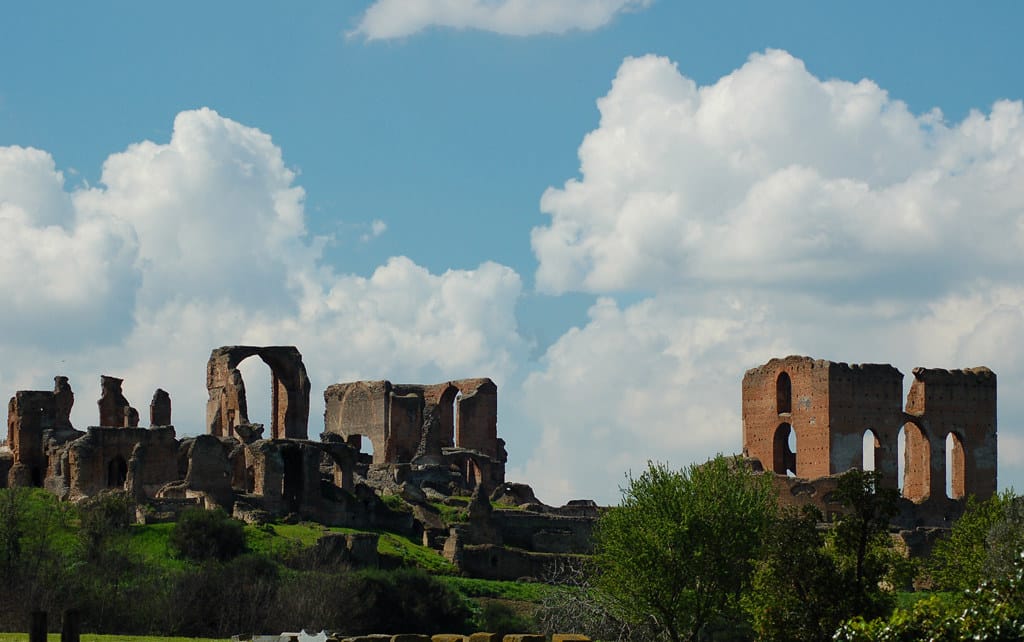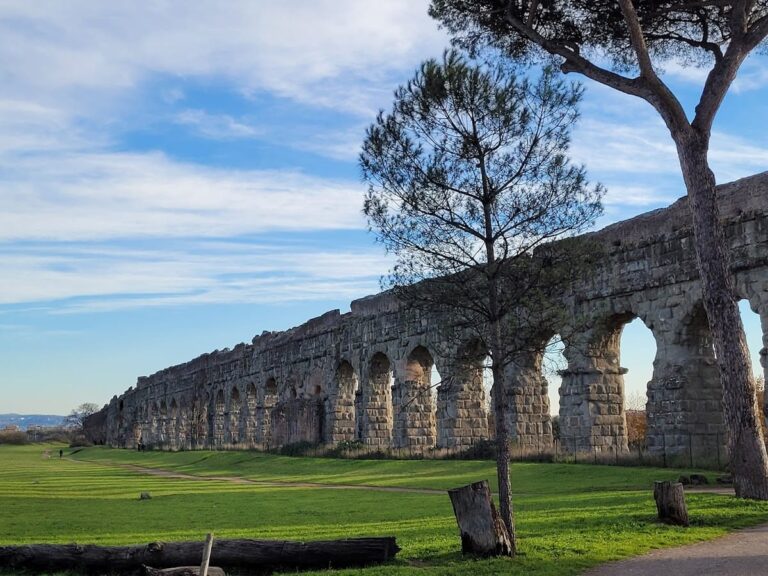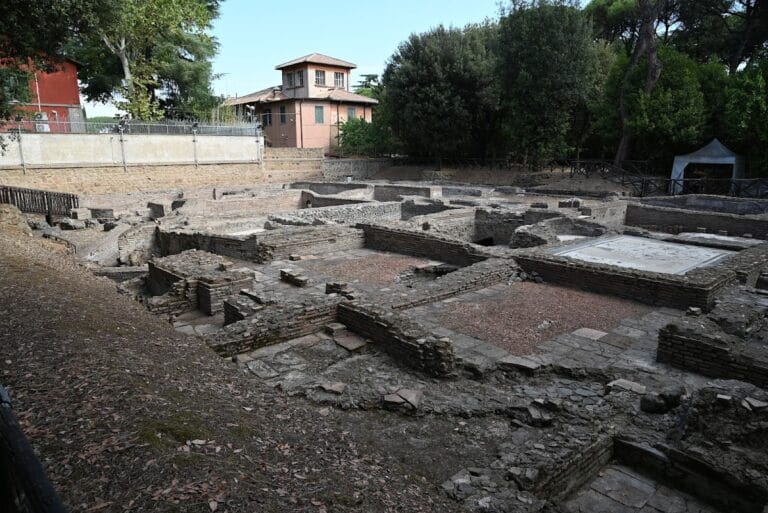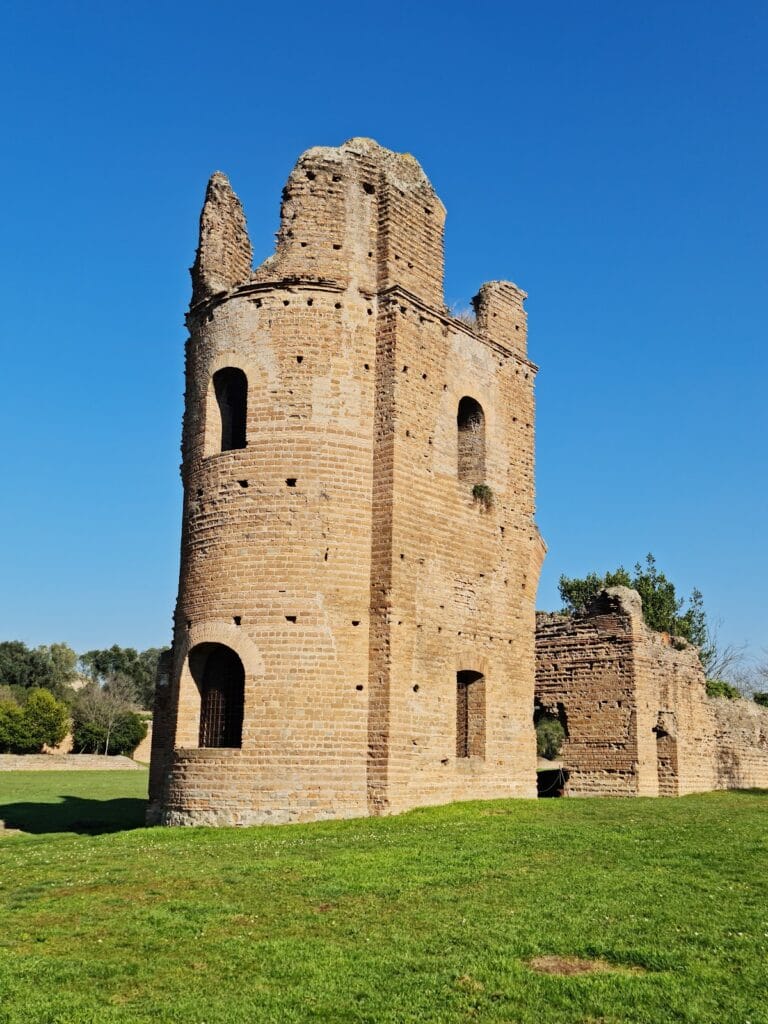Villa dei Quintili: An Ancient Roman Estate Near Rome
Visitor Information
Google Rating: 4.7
Popularity: Medium
Google Maps: View on Google Maps
Official Website: www.parcoarcheologicoappiaantica.it
Country: Italy
Civilization: Byzantine, Roman
Remains: Domestic
History
The Villa dei Quintili is situated near Rome along the ancient Via Appia Antica, approximately five miles from the city center. Constructed during the Roman Empire, it occupies a hill formed by ancient lava flows from the Vulcano Laziale and overlooks a small stream known as the Fosso dello Statuario. The villa was established in the early second century AD, specifically in the late Hadrianic period, as indicated by brick stamps discovered on the site.
The estate originally belonged to the senatorial brothers Sextus Quintilius Condianus and Sextus Quintilius Valerius Maximus, both of whom attained the consulship in 151 AD. These wealthy landowners enjoyed imperial favor under Emperors Antoninus Pius and Marcus Aurelius. However, in 182-183 AD, Emperor Commodus accused the Quintilii brothers of conspiracy, leading to their execution. Following this, Commodus confiscated the villa, incorporating it into the imperial properties. Subsequent emperors, including Commodus himself, are known to have resided there.
The villa continued to be partially occupied until the sixth century AD. Archaeological evidence such as brick stamps from the reign of Theodoric the Great and medieval ceramics and burials attest to ongoing use during the late antique and early medieval periods. During the Middle Ages, the villa’s monumental nymphaeum, originally a grand water sanctuary at the entrance, was repurposed into a fortified structure, known as a castrum.
From the tenth century onward, the estate passed through various ecclesiastical hands. It was owned by the monastery of Sant’Erasmo al Celio and later by Santa Maria Nova. Eventually, the property came under the control of the Hospital of San Giovanni in Laterano. In 1797, the villa was sold to Giovanni Raimondo Torlonia, marking its transition into private ownership.
Archaeological investigations began in the mid-eighteenth century under papal authorization. Notable excavation campaigns occurred in the late eighteenth century during the papacy of Pius VI, followed by early nineteenth-century work led by Antonio Nibby and mid-nineteenth-century efforts by Giovanni Battista Guidi. More extensive excavations have been conducted in the twentieth and twenty-first centuries by the Soprintendenza ai Beni Archeologici di Roma. These investigations have uncovered significant sculptures now housed in major museums, including the Vatican Museums, the Glyptothek in Munich, and the Louvre.
Remains
The Villa dei Quintili is a vast residential complex arranged on a hillside, adapting to the natural terrain formed by volcanic rock and descending toward a nearby torrent. Its layout comprises multiple nuclei, including courtyards, reception rooms, private quarters, and extensive service areas. The original monumental entrance faced the Via Appia Antica and was marked by a large nymphaeum, a water sanctuary that was later converted into a medieval fortress.
Constructed primarily in the second century AD, the villa features a large thermal bath complex with distinct rooms such as the frigidarium (cold bath), tepidarium (warm bath), and calidarium (hot bath). The building materials include colored marble slabs used for wall and floor coverings, many of which remain well preserved. The floors also display opus sectile, a decorative technique involving inlaid marble pieces, alongside rich stucco decorations.
Water supply was ensured by the Aqueduct of the Quintili, which still survives near the Grande Raccordo Anulare highway. This aqueduct fed several large cisterns on the estate, including the Grande Cisterna, Cisterna Piranesi, and Cisterna Mediana. Excavations have revealed a nearly 300-meter-long porticoed garden, or xystus, situated between the Appian Way and the villa’s central area. Additionally, a large vinery cella with wine presses was discovered in 2018, indicating agricultural activity on the estate.
The villa’s Antiquarium, housed in the former stable of the farmhouse, displays important finds such as a colossal statue of Zeus dating to the Hadrianic period, herms representing various deities, and the Niobe group statue. It also contains alabaster Christian artifacts and original decorative elements like wall plaster and opus sectile floors. Two marble cipollino columns uncovered during nineteenth-century excavations were later reused by the architect Valadier for the facade of Rome’s Teatro Tordinona.
The monumental nymphaeum and thermal baths stand out for their scale and sculptural richness, reflecting the luxurious standards of imperial patronage. Many of the villa’s decorative and structural elements remain in situ, although some have been relocated to museums. The site’s preservation allows for detailed study of Roman residential architecture and water management systems.










